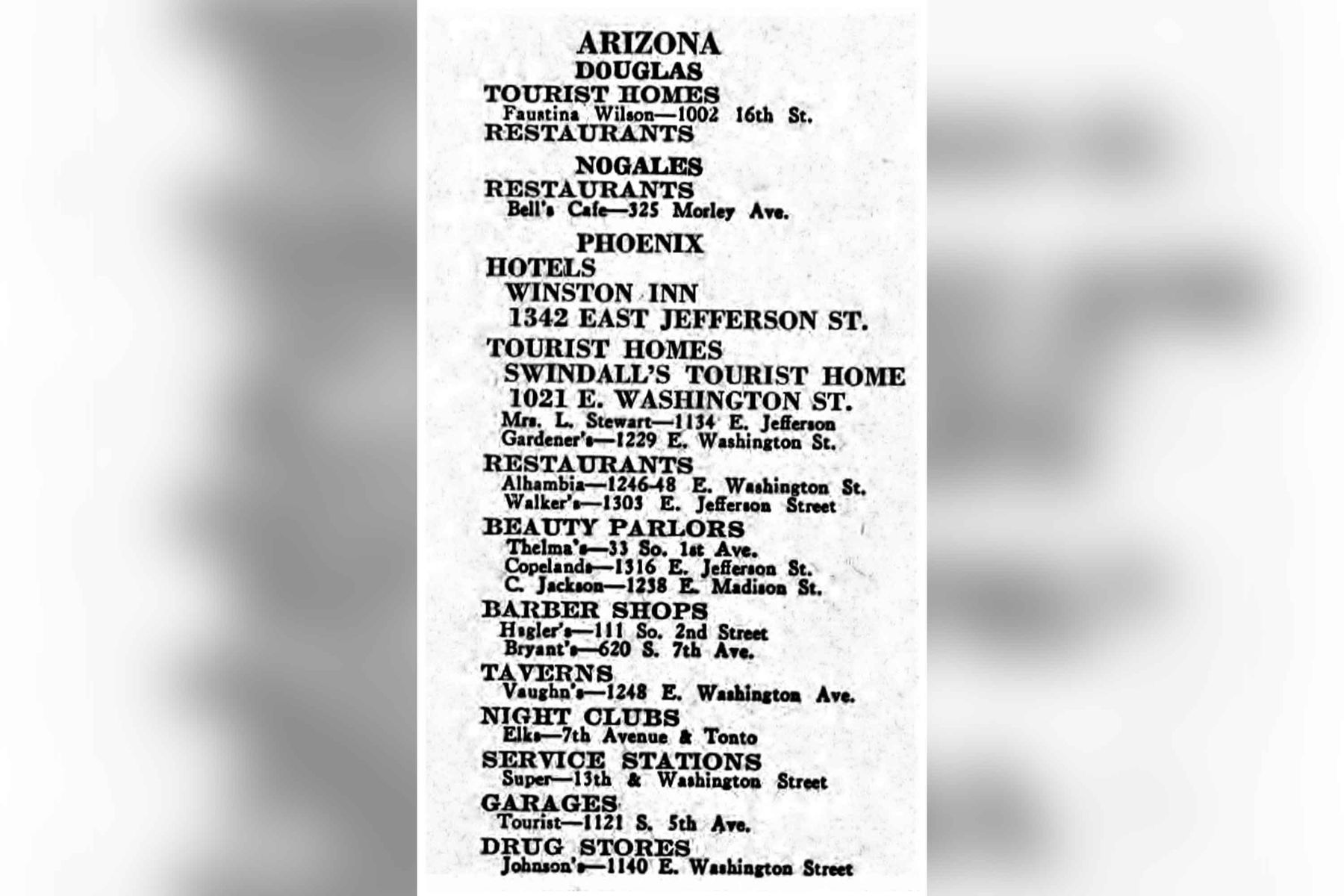A Glimpse Into Phoenix's Segregated Past: The "Green Book" Guide To Downtown

The best-picture winner at the 2018 Oscars went to Green Book, a biographical film inspired by jazz pianist Don Shirley’s tour of the Deep South in 1962. The title of the movie refers to the African-American guidebook for travelers with lists of businesses that would serve black people in segregated cities and towns.
Shockingly, Phoenix was one of those segregated places.
With its brilliant sunshine and spectacular desert landscapes, Phoenix promoted itself as the “winter playground of the Southwest” starting in the 1920s. Tourists had a smorgasbord of exciting lodging options, including elegant downtown hotels. Such fashionable accommodations were only available, however, if the travelers were white.
By law, African Americans were segregated in Phoenix public schools from 1910 to 1953. Many local businesses weren’t integrated until passage and rigorous enforcement of the Civil Rights Act of 1964. Until then, most hotels and motels didn’t allow black customers. Neither did nightclubs, although some would set aside certain evenings for African-American clientele. The Downtown Phoenix Woolworth’s store sold merchandise to black clientele but did not allow them to sit at its lunch counter.
“Restaurants wouldn’t serve you, and we had to sit in the balcony of theaters,” recalled African American and long-time Phoenix City Councilman Calvin Goode, in an interview in 2011.
In Phoenix, as in most parts of the country, de facto segregation occurred when businesses refused service to non-white customers because of local practice. In contrast, Jim Crow laws legally separated the races in Southern states.
Faced with such discriminatory conditions, African-American travelers had difficulty finding overnight accommodations or a hot meal. Sometimes they packed their cars with blankets and food to avoid potentially unpleasant or dangerous situations from the so-called “hospitality” industry.
As a result, alternative means for supporting black travelers evolved across the nation, like an updated version of the Underground Railroad. Hotels and cafés that catered to non-white tourists opened, often owned and operated by African-American entrepreneurs. In areas without large African-American populations, however, there were few such businesses, and black families would welcome guests into their “tourist homes.”
Extended trips remained difficult, but in 1936, a Harlem postal worker named Victor Green published the first Negro Motorist Green Book. The publication came to be thought of as the AAA Travel Guide for African Americans.
Phoenix businesses listed in the Green Book were predominantly located in the Eastlake Park district, a historically African American neighborhood stretching from 12th to 16th streets, and from Van Buren Street south to the Union Pacific Railroad tracks.
Downtown Phoenix lodging options included in early Green books included two hotels on E. Jefferson Street, the Raymond Hotel, and the Rice Hotel. The latter hotel hosted such luminaries as jazz musicians Lionel Hampton and Louis Armstrong, as well as Major League Baseball’s first black player, Jackie Robinson.
After the Civil Rights Act passed, publication of the Green guide soon ended. With a multitude of lodging and dining places suddenly legally available, although not necessarily overly welcoming to black guests, many African American-owned hospitality businesses closed.
The Elks Lodge, located in the Grant Park neighborhood south of downtown, and Swindall’s Tourist Home in Eastlake Park are two of the last buildings from the Green Book still standing. Nearly all the African American-owned businesses and properties from the guide have been lost, but their vital legacy survives.
Questions? Email Douglas C. Towne.










